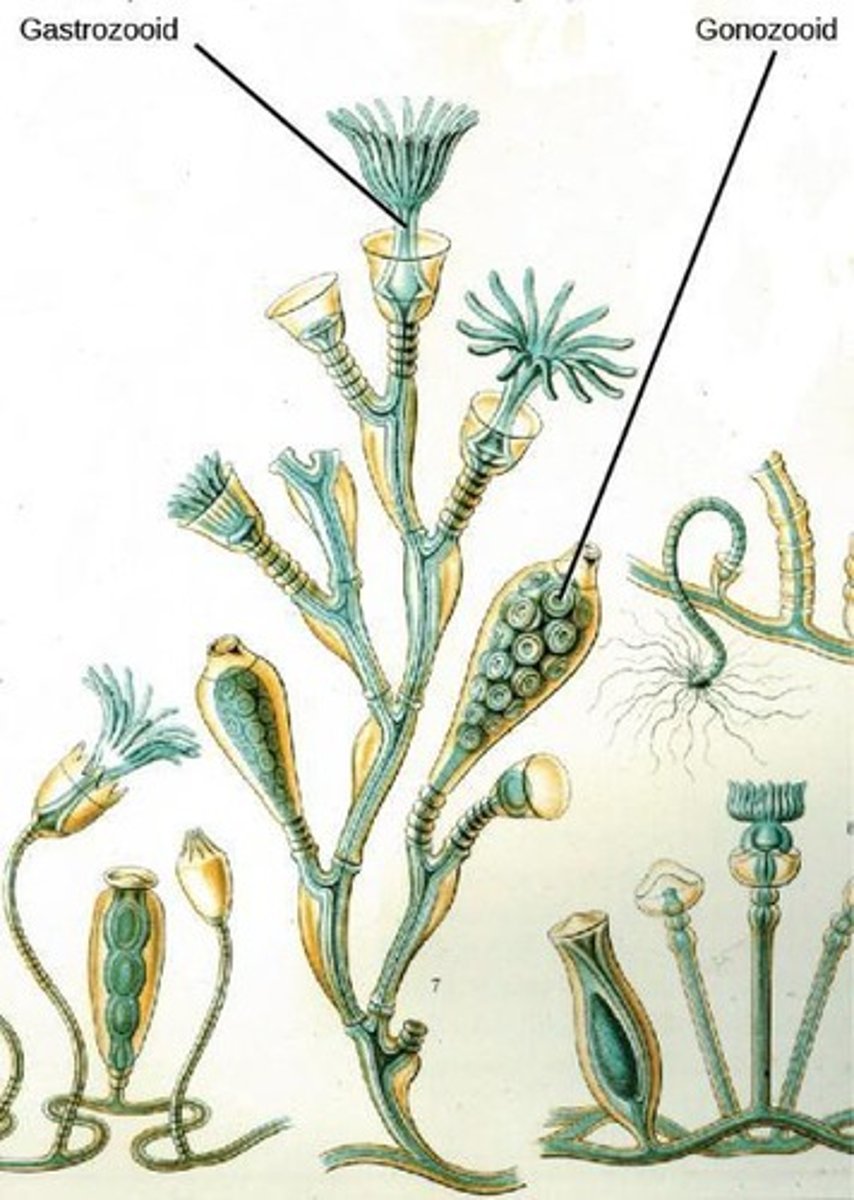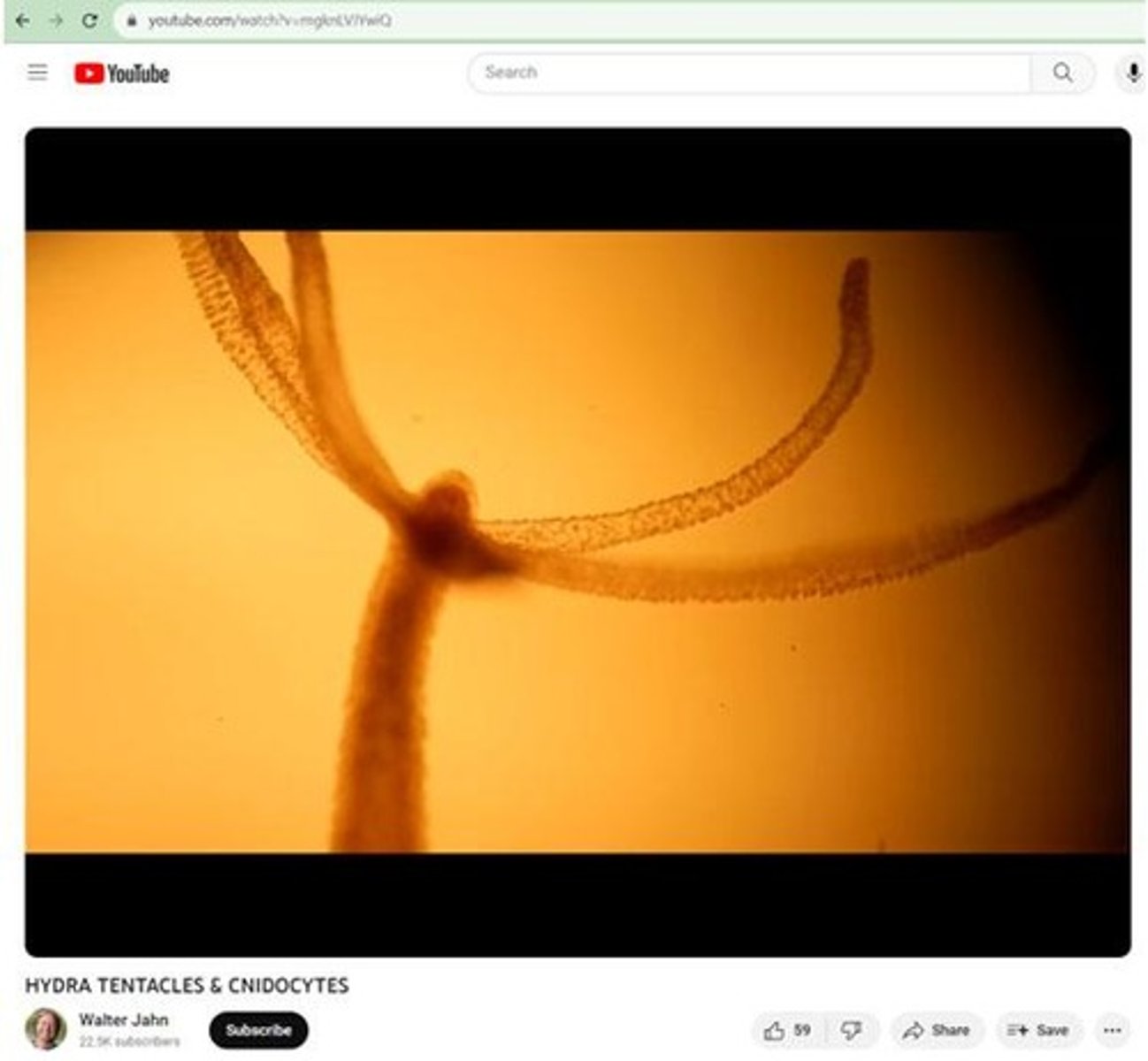Invertebrate Biology: Cnidarians and Annelids Overview
1/27
There's no tags or description
Looks like no tags are added yet.
Name | Mastery | Learn | Test | Matching | Spaced |
|---|
No study sessions yet.
28 Terms
Cnidaria
Phylum containing jellyfish, corals, and anemones.
Anthozoa
Class of Cnidaria, includes corals and anemones.

Scyphozoa
Class of Cnidaria, known as true jellyfish.

Cubozoa
Class of Cnidaria, includes box jellyfish.

Hydrozoa
Class of Cnidaria, includes hydras and Portuguese Man O' War.

Gastrozooid
Feeding polyp in colonial cnidarians.
Gonozooid
Reproductive polyp in colonial cnidarians.
Coenosarc
Common tissue connecting polyps in colonies.
Ctenophora
Phylum of comb jellies, transparent and ciliated.
Platyhelminthes
Phylum of flatworms, includes free-living and parasitic forms.
Turbellarians
Free-living flatworms, e.g., planarians.
Cestoda
Class of Platyhelminthes, includes tapeworms.
Trematoda
Class of Platyhelminthes, includes flukes.
Proglottids
Segments of tapeworms containing reproductive organs.
Annelida
Phylum of segmented worms, includes earthworms.
Oligochaetes
Class of Annelida, includes earthworms with few bristles.
Polychaetes
Class of Annelida, marine worms with bristles.
Hirudinea
Class of Annelida, includes leeches.
Chaetae
Bristle-like structures on annelids for locomotion.
Coelom
Body cavity functioning as a hydrostatic skeleton.
Cephalization
Development of a head region with sensory organs.
Blastocoelomate
Organisms with a body cavity not lined by mesoderm.
Planaria
Genus of free-living flatworms, model organism.
Dugesia sp.
Common genus of planarians, studied for regeneration.
Venus' girdle
Ctenophore known for its ciliated rows.
Sea gooseberry
Common name for Pleurobrachia pileus, a ctenophore.
Hydra
Freshwater cnidarian known for regeneration.
Obelia
Colonial hydrozoan, important lab example.